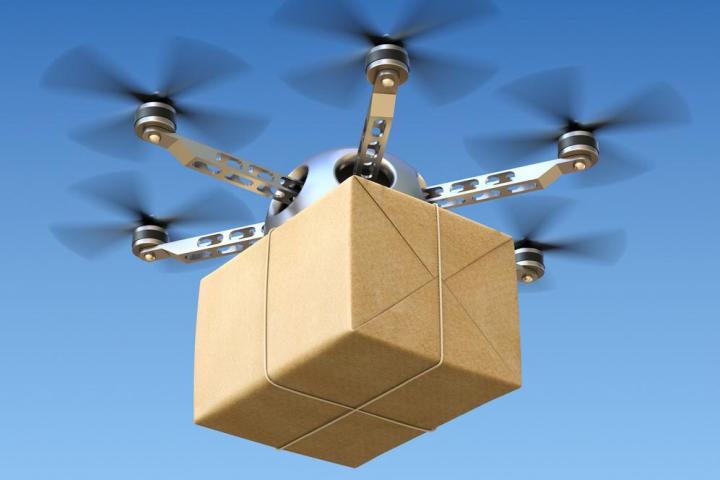
It sounded wacky then and, yes, it still sounds wacky now.
Walmart’s patent application describes a “gas-filled aerial transport and launch system [comprising] a transport aircraft … propulsion system … and a navigation control system that controls the direction of travel of the transport aircraft.” Yes, that sounds like a blimp to us, too.
It goes on: “The carrier compartment comprises: an unmanned aircraft system (UAS) storage area configured to receive multiple UASs; and an UAS launching bay that enables the UAS to be launched while the transport aircraft is in flight and while the UAS is carrying a package to be delivered.”
That’s pretty much what Amazon described last year, so it will be interesting to see how the United States Patent and Trademark Office handles Walmart’s application.
However, one notable difference is the altitude at which the blimps would fly. While Amazon’s floating-warehouse/drone-airport combo would park itself way above the clouds at 45,000 feet (about 13,700 meters), Walmart’s would hang in the air much, much lower at between 500 and 1,000 feet (about 150 to 300 meters). Considering issues of drone battery power, Walmart’s idea seems more sensible, although the blimp’s stability would be at the mercy of weather conditions, whereas Amazon’s should be well clear of weather systems.
Walmart, which suggested two years after Amazon that it too was thinking about developing a drone delivery platform, says in its patent: “There are numerous ways to distribute and deliver products. Getting the product to a delivery location, however, can cause undesirable delays, can add cost and reduce revenue.” That’s where its giant package-filled floating warehouse comes in.
The blimp would stop by one of Walmart’s ground-based locations to load up with deliveries and drones before lifting off again, heading for an optimum location from which its drones can make numerous deliveries, buzzing between customer addresses and the blimp on multiple runs. Once the blimp is empty of packages, it would return to base to load up some more while the drones’ batteries recharge.
But wait. We shouldn’t get carried away with ourselves here. These are patents we’re talking about. Neither company, to the best of our knowledge, has a working prototype of this extraordinary design. And neither company even has permission to launch such a machine, full of drones, into the sky. It’s not certain we’ll ever see Walmart’s — or Amazon’s for that matter — blimp-drone plan come to fruition, but it at least offers us a little bit of insight into how the companies are considering building out their respective drone delivery services when they finally get off the ground.
With Walmart apparently mirroring Amazon with its drone plans, let’s wait and see if the company also comes up with a patent similar to Amazon’s giant beehive-like building for city-based drone deliveries. Surely it’s only a matter of time.



